The fast-moving, devastating flood that struck Texas Hill Country on Friday was a flash flood, the deadliest type of storm-related event in the US.
Americans were left horrified as they watched a ‘river of death’ swell more than 30 feet in just 45 minutes, sweeping away homes, vehicles and entire families.
The terrifying speed and scale of the disaster have left many asking: How does a flash flood happen so quickly, and with so little warning?
According to the National Weather Service (NWS), a flash flood is defined as flooding that begins within six hours of heavy rainfall, and often much sooner.
In some cases, flash flooding can begin in as little as three hours. Unlike river floods, which build gradually over time, flash floods are triggered by sudden, intense bursts of rain that overwhelm the ground’s ability to absorb water.
Urban areas with poor drainage and rural landscapes with dry, compacted soil, like much of central Texas, are especially vulnerable.
That is exactly what happened along the Guadalupe River in Kerr County, after more than 10 inches of rain fell in a matter of hours, leaving residents with no time to prepare.
At least 82 people were killed in the devastation and 41 remain missing. Ten girls and a counselor are still unaccounted for at Camp Mystic, a Christian summer camp along the river where 27 people died in the flooding.
But experts warned there are several other states, including Florida, New York and New Jersey, which are prone to deadly flash floods due to a combination of geography, weather patterns, soil type and urban development.
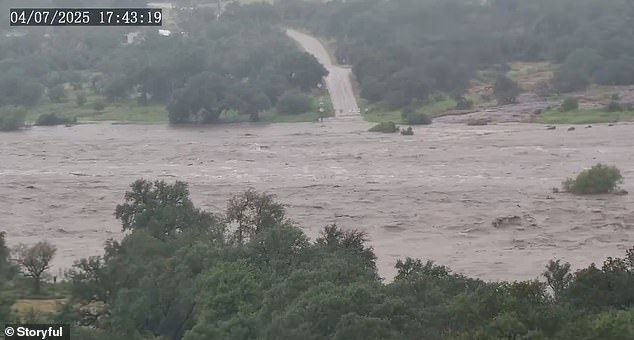
Americans have been left horrified as they watched a ‘river of death’ swelling more than 30 feet in just 45 minutes, with many questioning how a flash flood happens so quickly and violently

A view inside of a cabin at Camp Mystic, the site of where at least 20 girls went missing after flash flooding in Hunt, Texas
It started with a powerful storm that dropped most of its rain in the dark early morning hours.
Although a flood watch was issued midday Thursday, the NWS escalated its warning around 4am Friday, citing the potential for catastrophic damage and a severe threat to human life.
By 5:20am, water levels in parts of Kerrville were rising rapidly as runoff from the surrounding hills poured into the Guadalupe River, turning low-lying areas into violent channels of fast-moving water.
The Texas Hill Country is naturally prone to flash flooding due to the region’s steep terrain and hard, rocky soil that does not absorb water well. Instead, rainfall skims across the surface, collecting speed and force as it flows downhill.
In these conditions, even a few inches of rain can be dangerous, and this storm dumped over ten.
Most flood deaths in the US occur when people attempt to drive through flooded roads, underestimating the force of moving water.
Just 12 inches is enough to sweep away a vehicle, but for what happened in Texas, many victims were not in cars.
They were at home, asleep or camping outdoors, and the water came too fast for warnings to reach everyone, and for many, there was no way out.
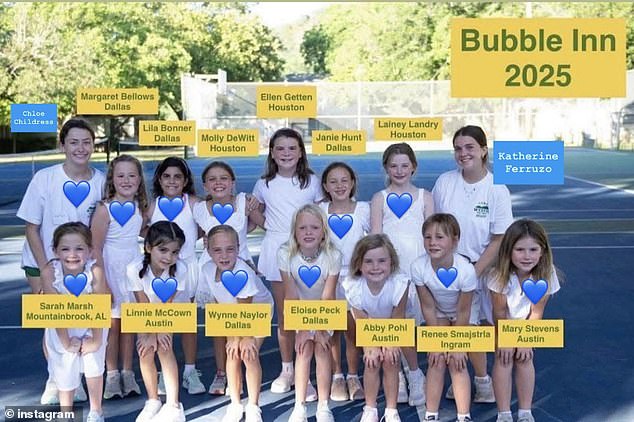
The 13 girls and two counselors were staying in Camp Mystic’s Bubble Inn cabin when the catastrophic floods hit on Friday morning. The bodies of 10 of the girls and counselor Chloe Childress, 18, have been found as of Monday morning, while counselor Katherine Ferruzzo and three campers remain missing
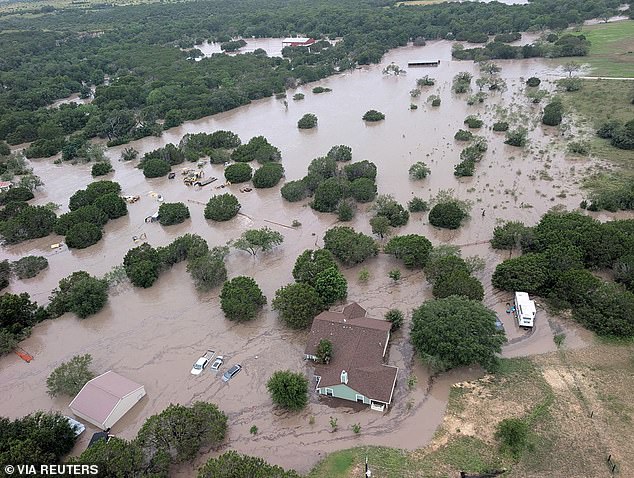
By 5:20am, water levels in parts of Kerrville were rising rapidly as runoff from the surrounding hills poured into the Guadalupe River, turning low-lying areas into violent channels of fast-moving water
The ongoing threat continued into the weekend, as more storms were forecast for Saturday.
Authorities said about 850 people had been rescued, including some by helicopter.
Flash flood warnings and watches remained in effect across central Texas through Monday, and rescue teams are still searching for the missing.
Flash flooding is the number-one cause of weather-related deaths in the US, and experts warn the threat is growing.
Last year,145 people died in flash floods, according to the NWS.
On average over the past 30 years, floods have claimed 127 lives annually.
Climate scientists say warming temperatures are driving more intense and frequent rainfall events.
Warmer air holds more moisture, which leads to heavier downpours and, in turn, greater risk of flash flooding, especially in regions like the southern US where the terrain and infrastructure are ill-equipped to handle rapid water surges.
This could bring deadly flash floods to other US states, including Florida, which is barely above sea level in many areas, so rain has nowhere to drain.
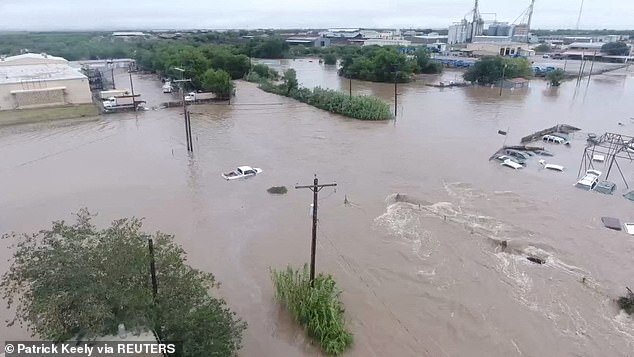
In some cases, flash flooding can begin in as little as three hours. Unlike river floods, which build gradually over time, flash floods are triggered by sudden, intense bursts of rain that overwhelm the ground’s ability to absorb water
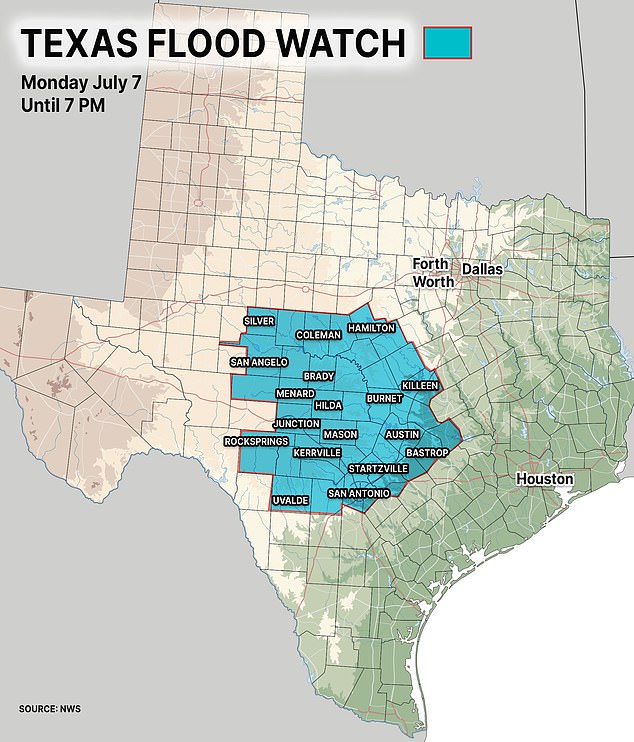
Flash flood warnings and watches remained in effect across central Texas through Monday, and rescue teams are still searching for the missing
Much of Louisiana is swampy or below sea level, especially around New Orleans, making it a target.
New Jersey is one of the most densely populated cities in the US, meaning there is less natural land to absorb rainwater.
Upstate New York sees fast runoff from mountain terrain, while New York City’s concrete landscape causes drainage issues.
North and South Carolina are prone to flash flooding due to a combination of factors including their humid subtropical climate, coastal exposure and topography, particularly in the mountains.
